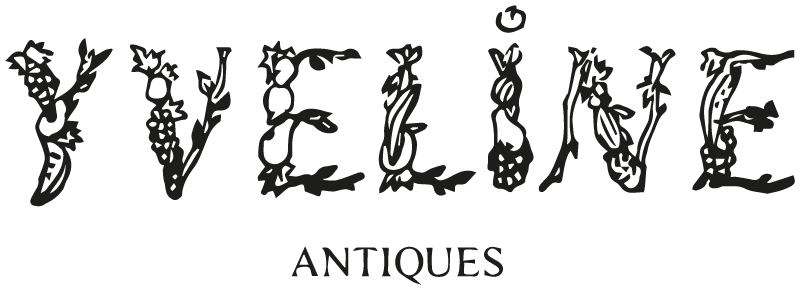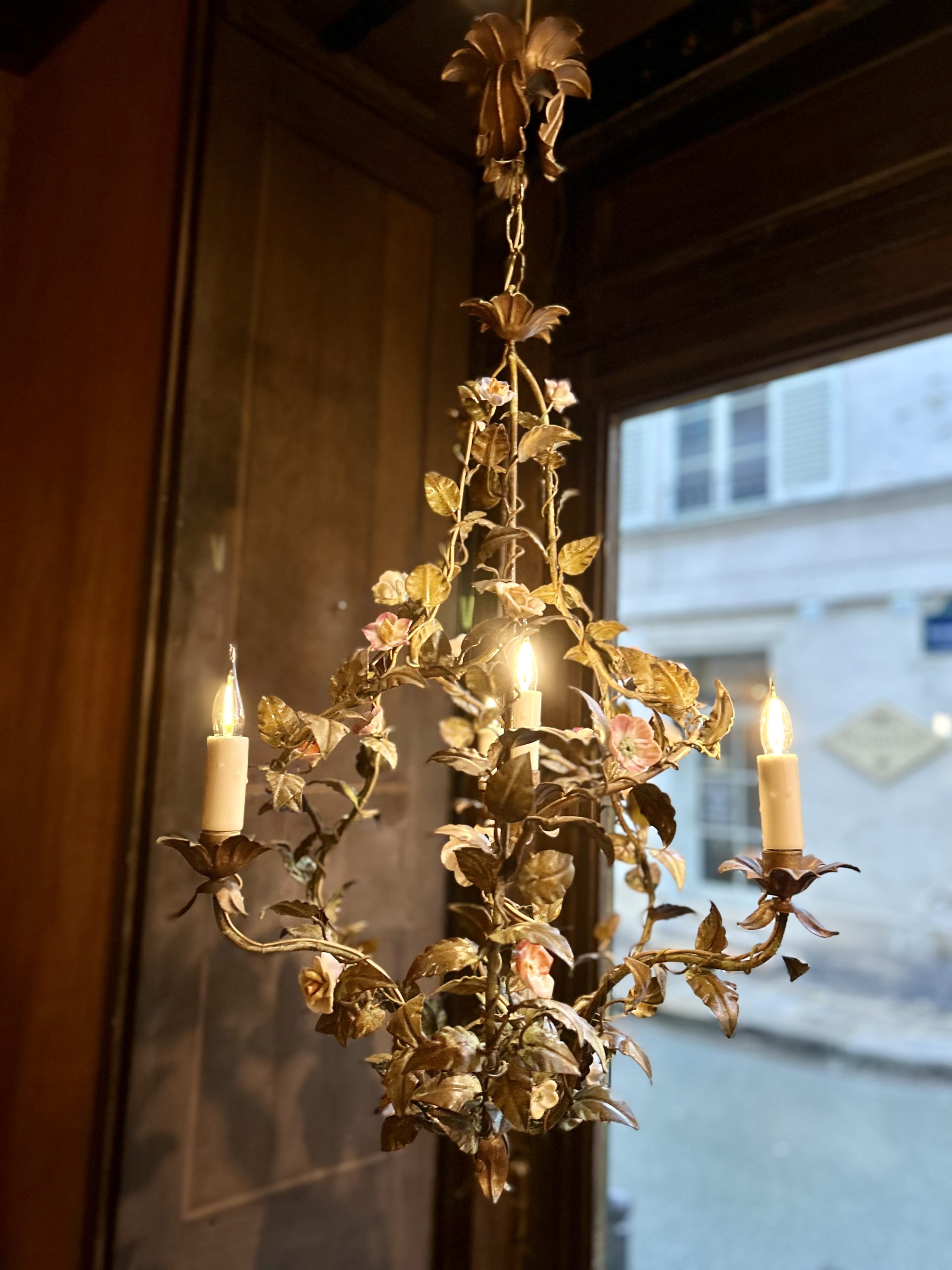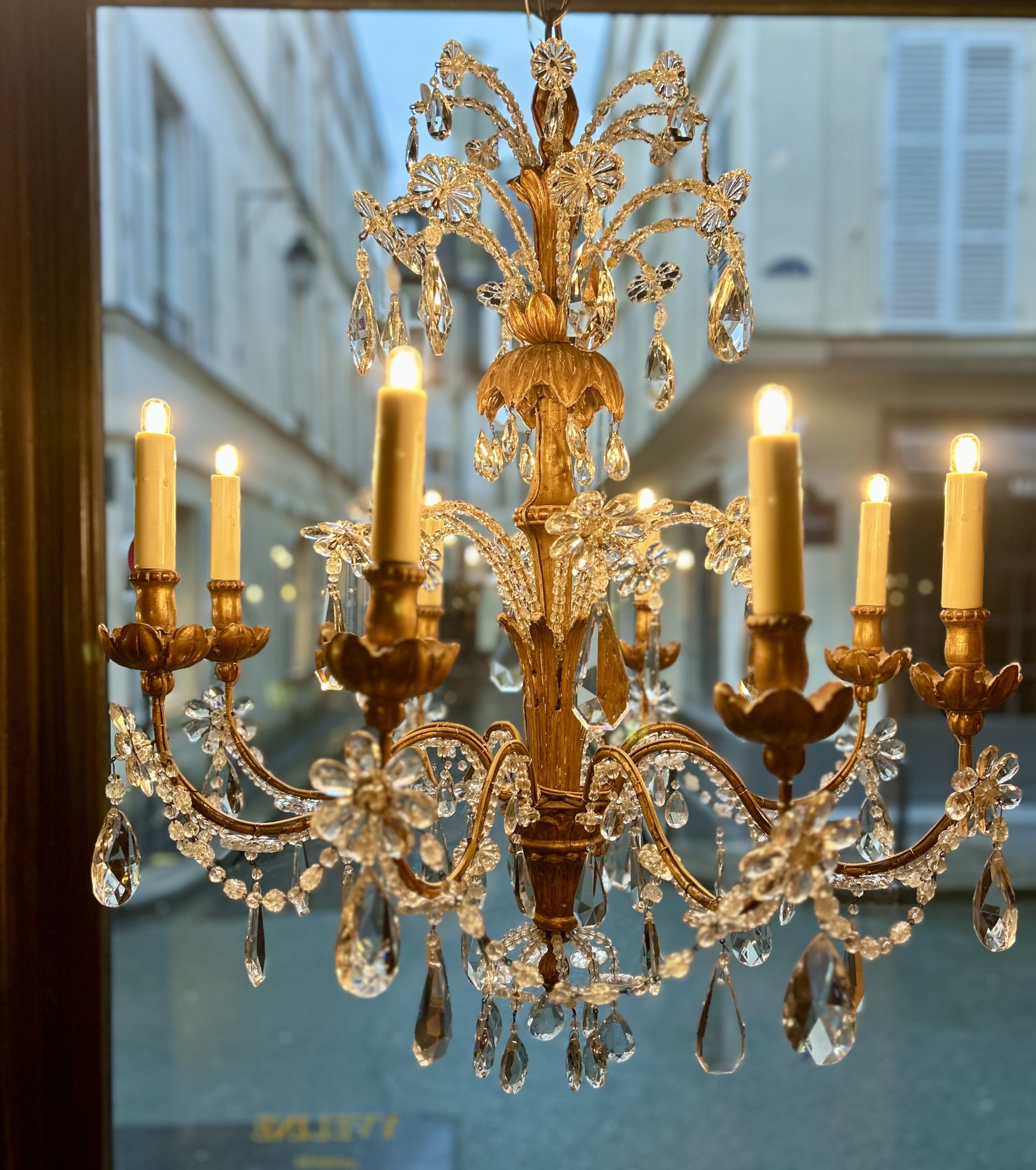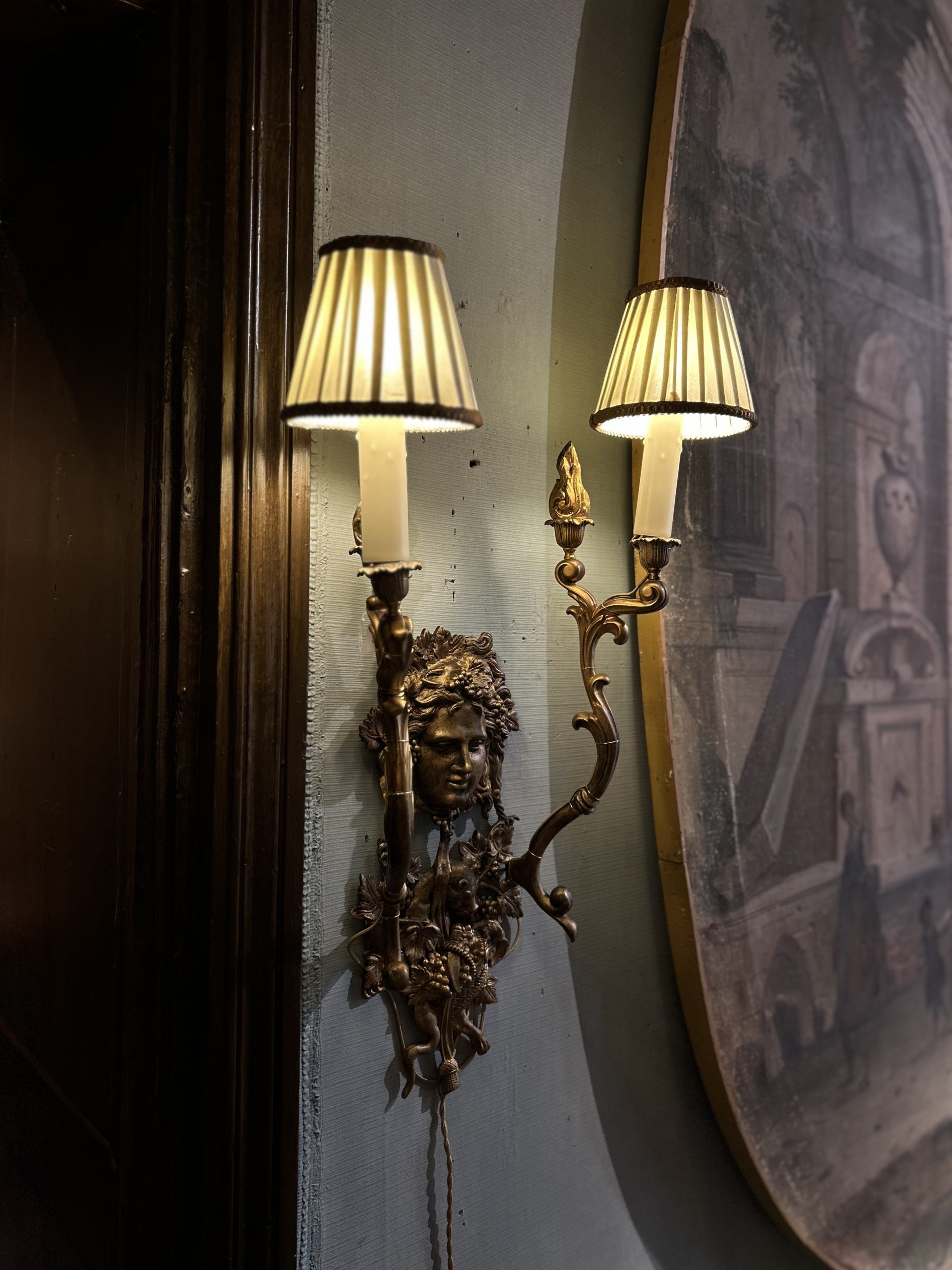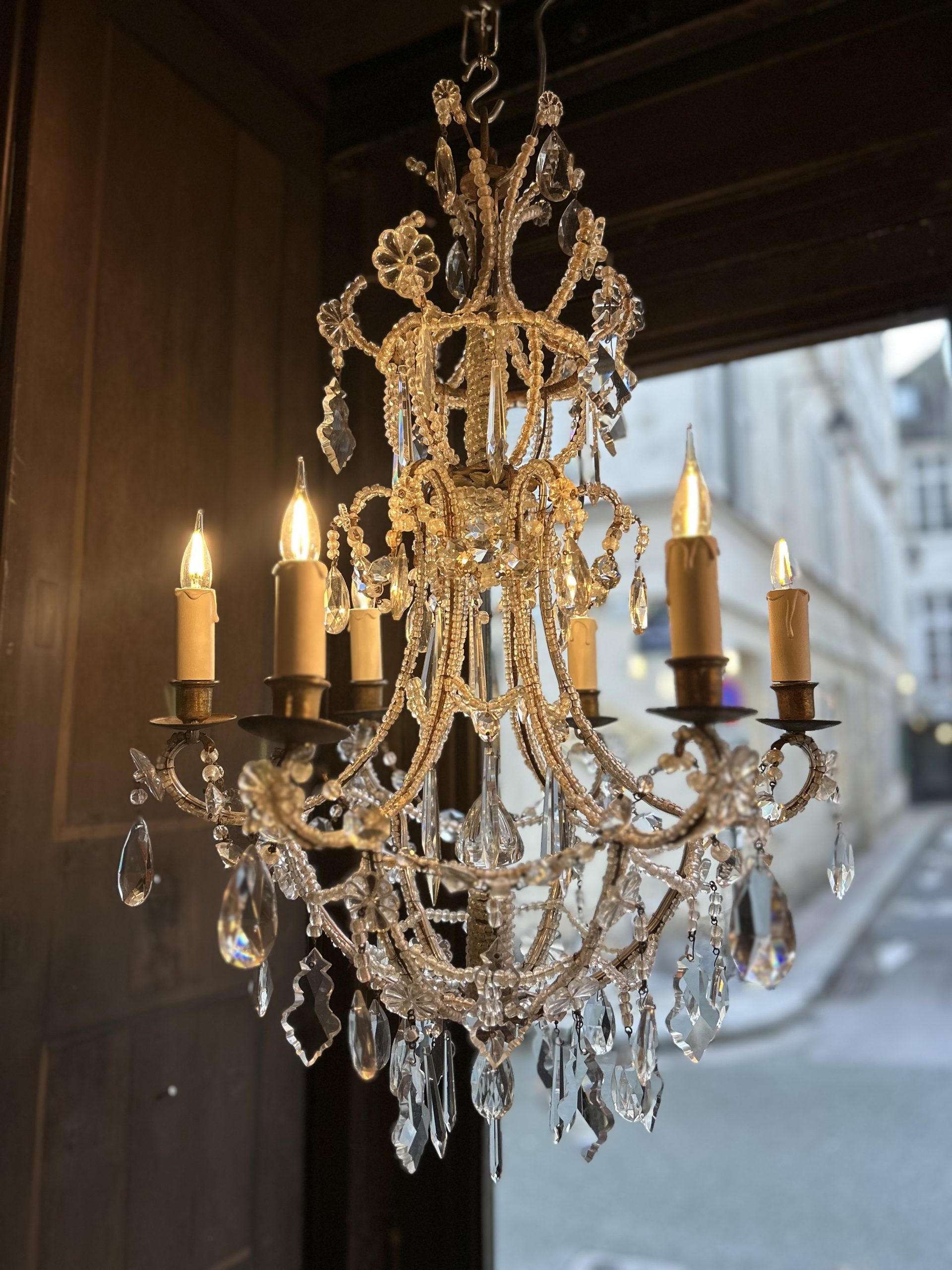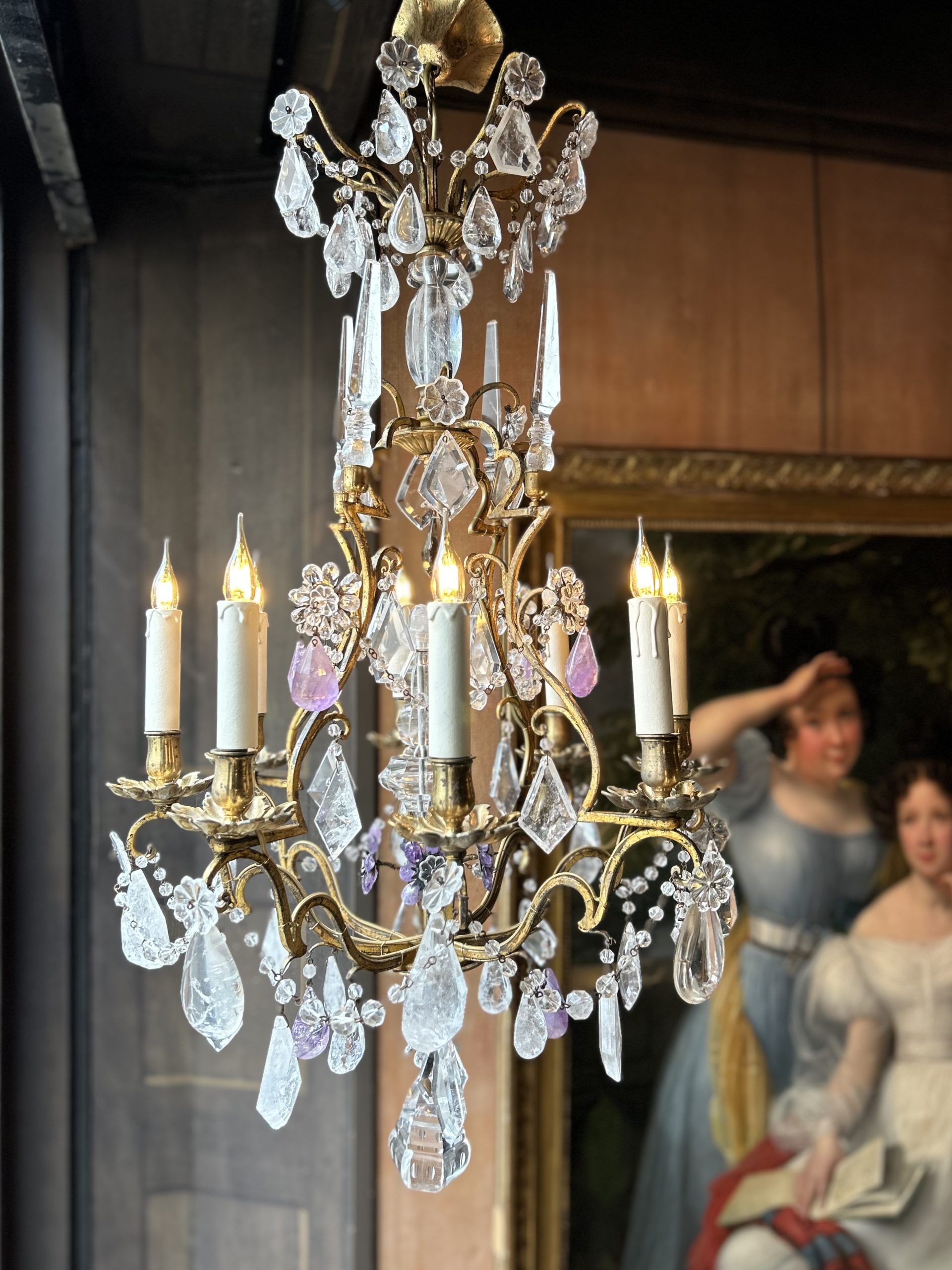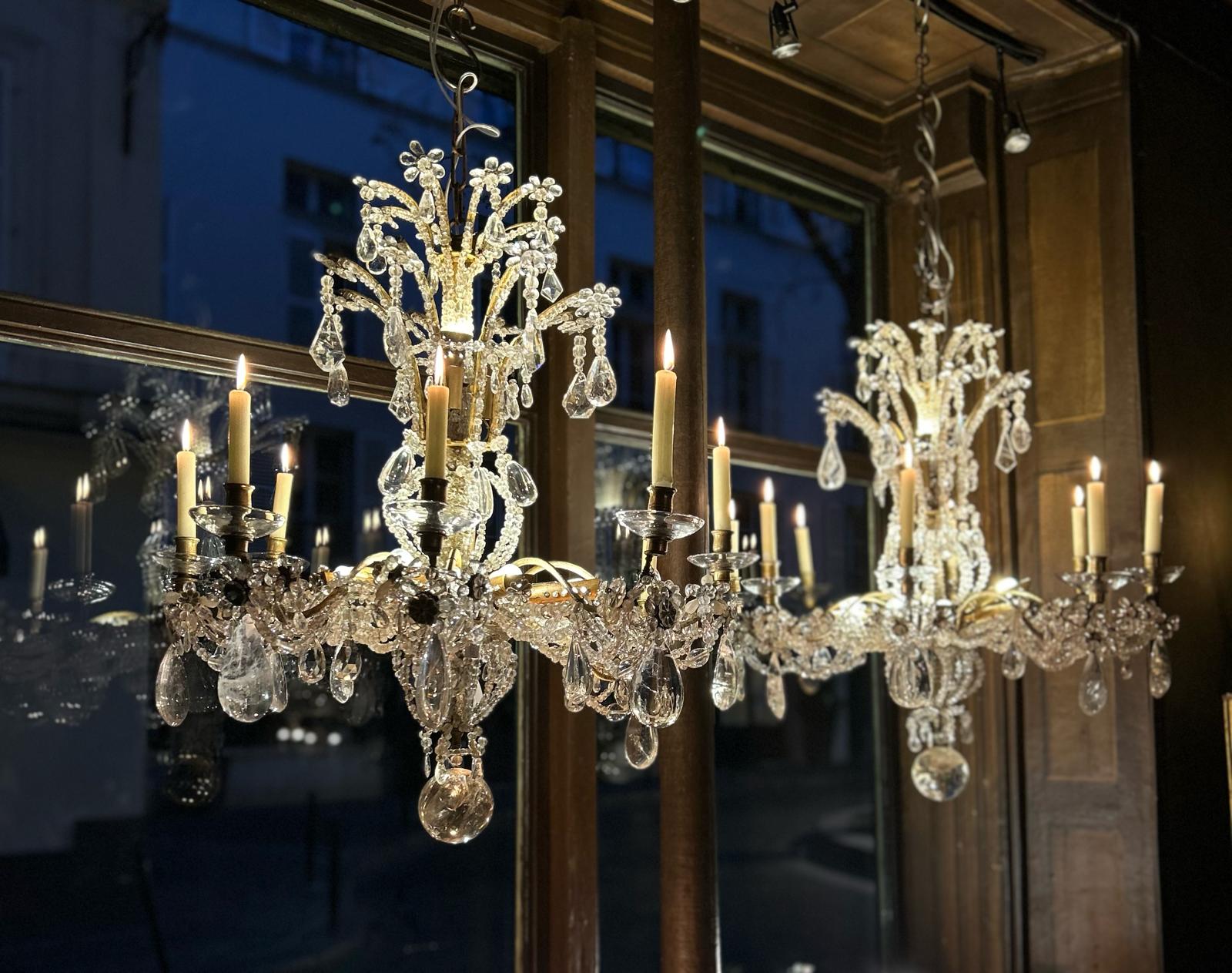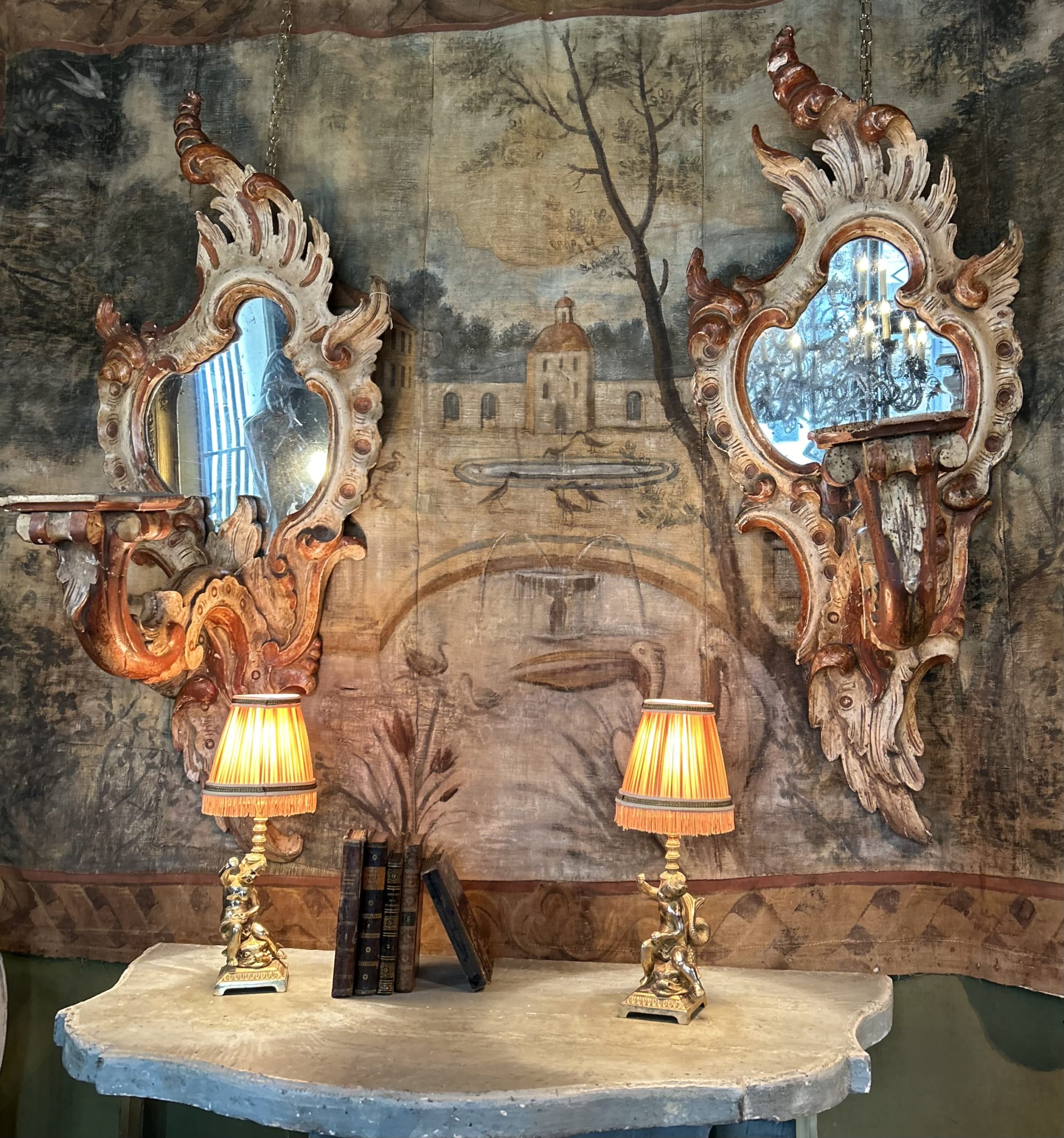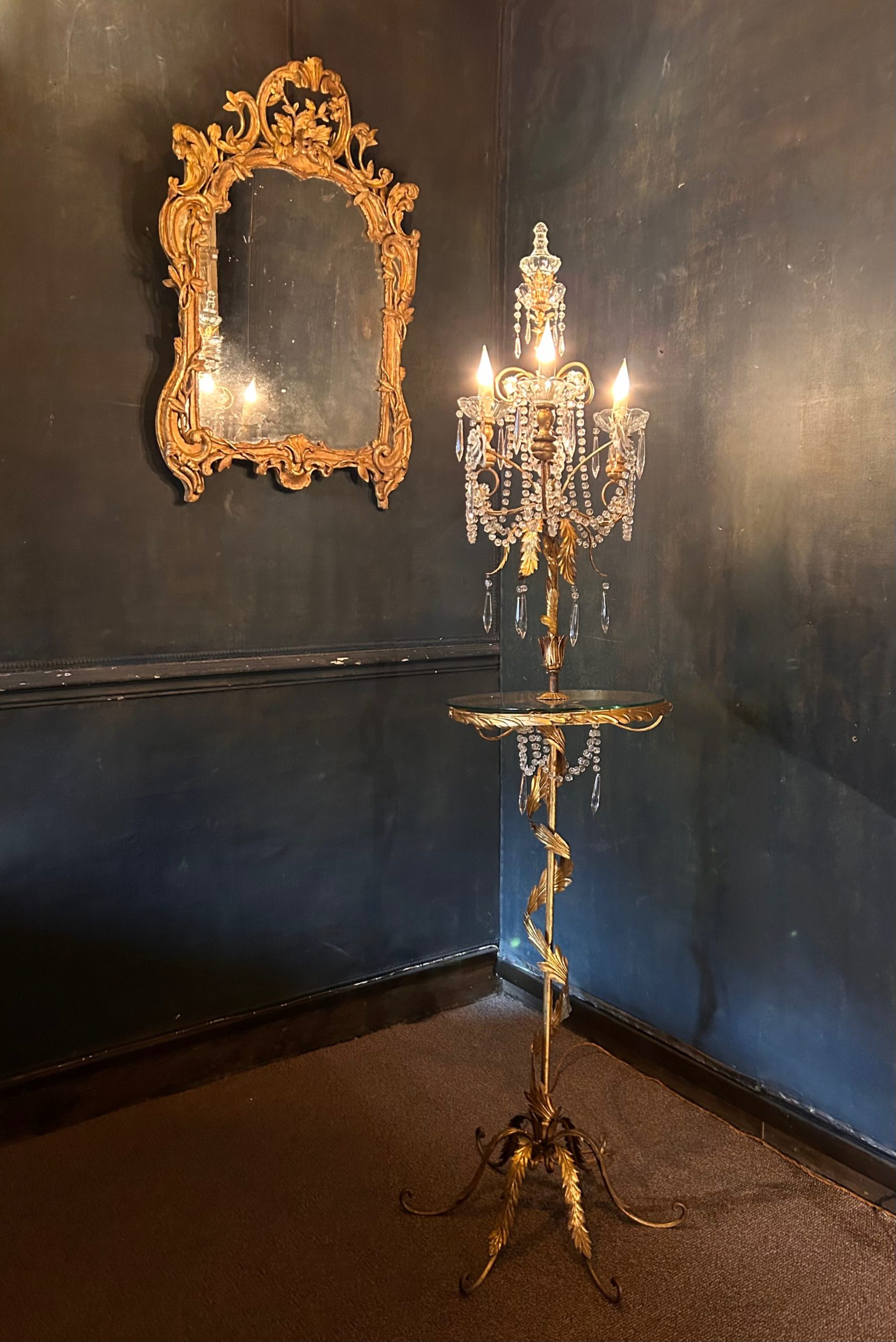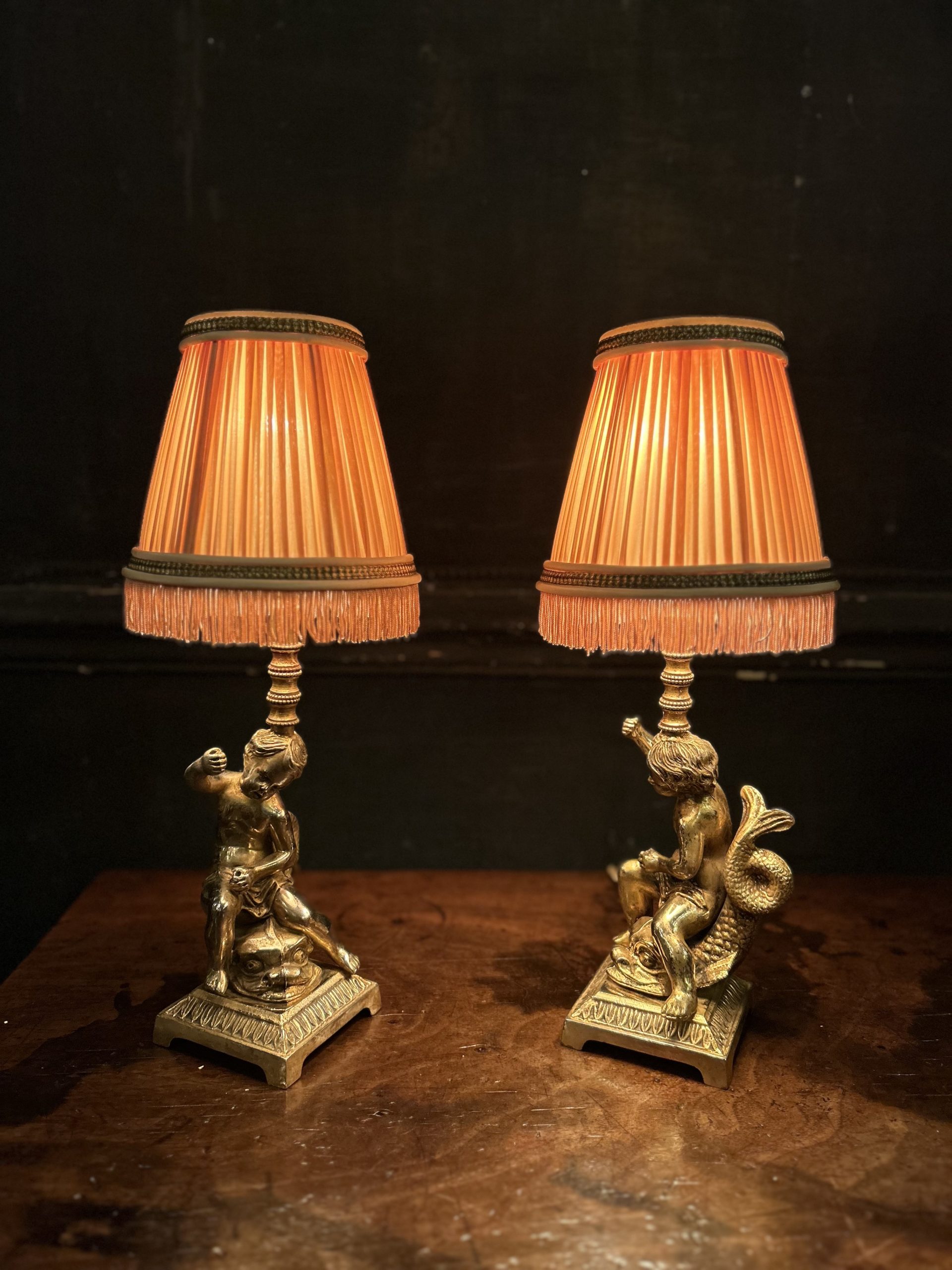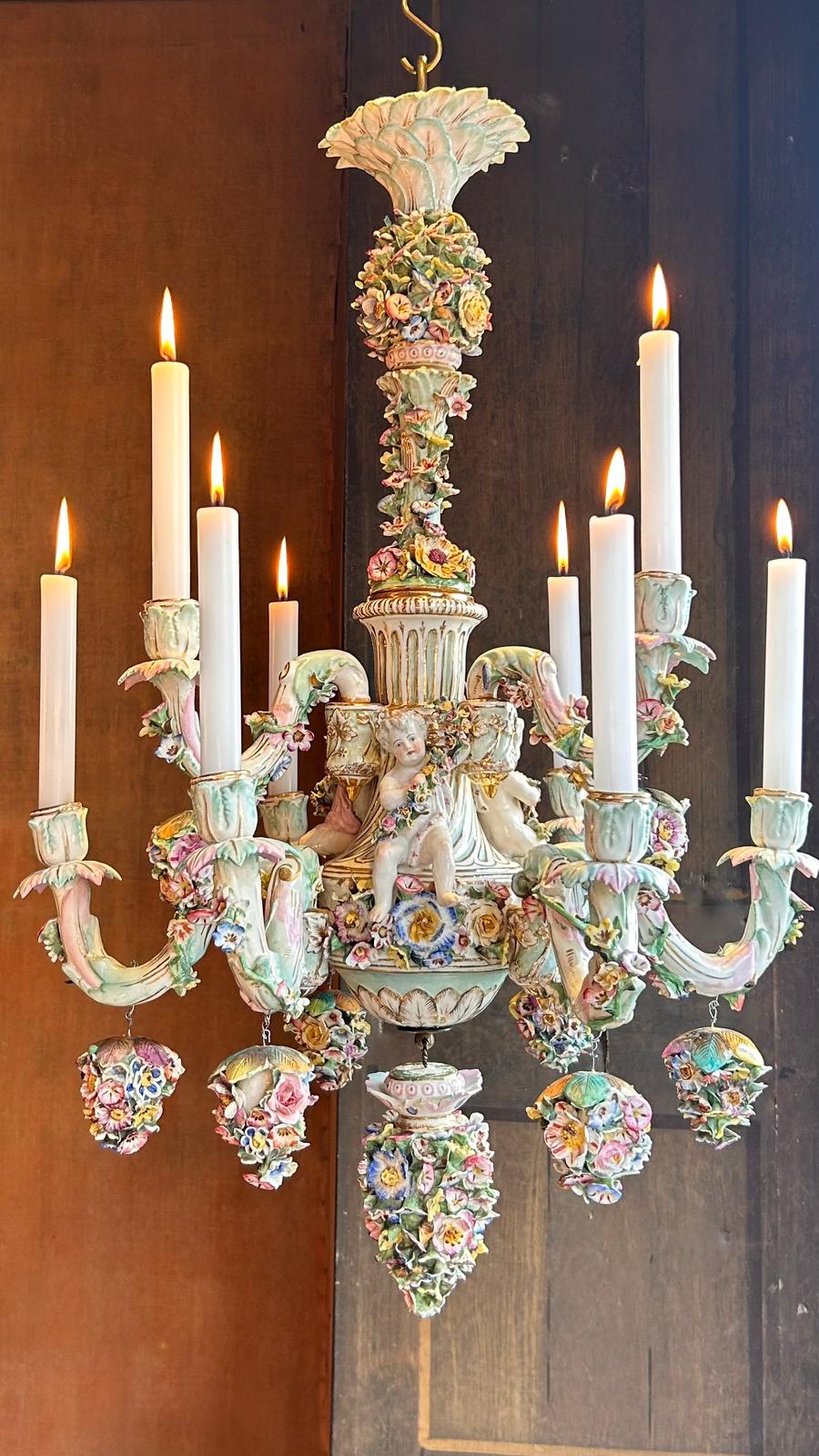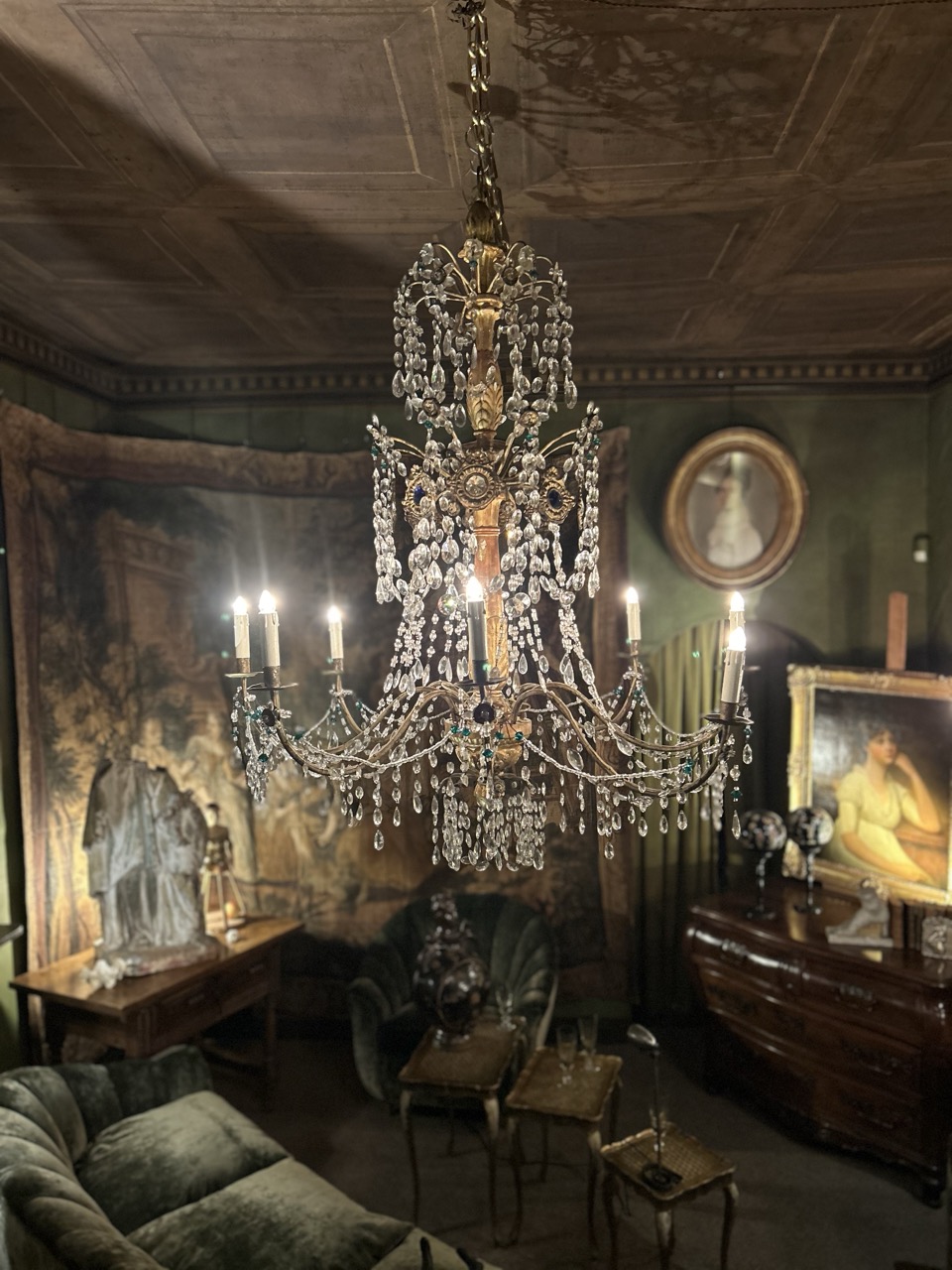Pair of lamps in the shape of parrots in polychrome enameled cracked earthenware mounted on chiseled gilded bronze bases, in the style of Meissen, new lampshades in silk lined with kaki color and Houlès trimmings.
Electrification to standards
The taste for so-called imitative animals, monkeys, talking or singing birds peaked during the Age of Enlightenment. In the 18th century, the parrot was an absolute symbol of beauty and exoticism, and a reference to an imagination of exuberant nature, warm seas and pirates. He is endowed with a great capacity for learning and even has the gift of eloquence, which is exceptional in nature. For these virtues, it is very appreciated by a cultivated elite who do not hesitate to install aviaries in the parks of castles or to represent the bird in numerous paintings.
The bird is also a symbol of purity, with its waterproof plumage on which water slides but does not penetrate. It is for this reason that from the Middle Ages it adorned certain representations of the virgin and child. His popularity with the princely courts will reach its peak during the fashion for “antics” where he will hold second place in the satirical imitation of the human race. During this period, Parisian haberdashery merchants placed multiple orders, notably to the Compagnie des Indes, which imported these porcelain parrots in large quantities from China. The technical mastery achieved by Chinese ceramists then allows a beautiful imitation of the bird’s plumage, with glazes in very shimmering shades. Once arrived in Paris, these precious porcelains were mounted on bronze and sold to members of the nobility.
Early 20th century
Height: 55cm
